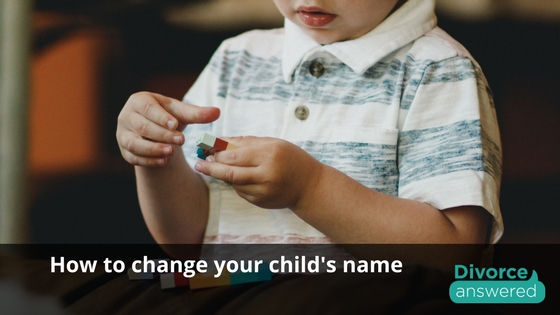
For some people at the end of a bad marriage or long-term relationship it is their wish to change their name or their child wishes to change their name. Rachael Scharrer, divorce expert and founder of Divorce Answered.com.au, knows first-hand the desire, challenges and how to change a child’s name. Rachael was and still is the primary carer of two children and is the sole financial provider for the children. Accordingly, she wanted her name reflected in the children’s lastnames post-separation. When Rachael approached her ex-spouse, he flatly refused. After some resistance and time, he realised that it wasn’t such a big issue and agreed to the name change.
Most parents wonder how any other person may have changed their child’s name and, today, Divorce Answered outlines the only two ways to change your child’s name.
As with all government documents, including those pertaining to Births, Deaths and Marriages, application forms must be filled out correctly. No matter what type of relationship that you are currently in or have been in, there are only two ways to change your child’s name when both parents are alive and named on the birth certificate.
Let’s start by addressing the biggest fallacy in name changes. The greatest misconception is that if you have ‘Sole Parental Responsibility’ that you can change the child’s name. When you separate, parents automatically default to Equal Shared Parental Responsibility. This means that both parents have equal say in the decisions for the child. Some parents seek Sole Parental Responsibility as a court order. However, Sole Parental Responsibility doesn’t extend into changing a child’s name.
The first way is by mutual consent. This means that both parents agree to the child’s name change and jointly sign the one name change form. It is the easiest, cheapest and fastest way to change your child’s name.
The second and final way is by Court Order from the Family Court. Currently, the Family Law Act of 1975 does not have any provisions for name changes which makes this path potentially more complicated, protracted, contentious and expensive. The Court Ordered name change will not be made to Births, Deaths and Marriages Registry – rather it will ‘award’ one parent the right to make the name change or order the child to be known by a particular name. The Presiding Family Court Judge appointed to your case takes a number and combination of considerations in to account. They include:
Thinking that it would be ‘more convenient’ if your child had a different lastname is not an appropriate reason to proceed with a name change.
So what new lastname will your child have? There are so many options!! Here are a few:
Once you have either mutual consent with the child’s other parent or relevant Court Order, you will have to fill out an application with your individual state/territory’s Births, Deaths and Marriages Registry and have the other parent’s signature or court order attached to the application.
You may like to read more about Equal Shared Parental Responsibility.